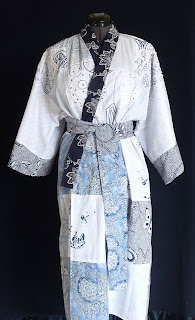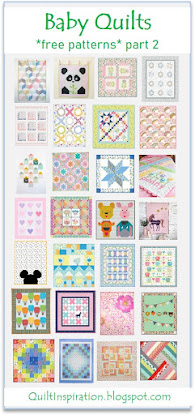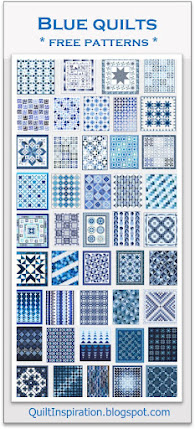The Connecting Our Natural Worlds exhibit by SAQA showcases art quilts that
illustrate the natural wonder of habitats around the globe.
Through their own unique artistic interpretation, each artist has
identified danger to flora and fauna in their own backyards. The selected pieces inspire viewers to get closer to nature and
become better stewards for our environment. We recently visited this outstanding exhibit at the Brigham City Museum in Utah.
~ p.s. Check out our eBay shop for great bargains on books, magazines, and collectible items. For free quilt patterns, please visit us on Twitter.
Flower Hat Jelly by Kelly Spell (Tennessee)
Kelly Spell says that her designs are inspired by animals at the Tennessee Aquarium, where she volunteers as a docent. "I capture and highlight the brilliance of nature's designs by abstracting my favorite features of particular animals." This dynamic piece was made with cotton fabric, which was machine pieced, appliqued, and free motion quilted. The outstanding quilting features a "wave" pattern, as you can see in the closeup photo below.
Kelly's work inspires viewers to take a second look at the natural wonders around them, and to consider the impact of human activities on marine life. She notes that "Simple actions such as eliminating plastic straws and plastic shopping bags from our everyday lives can have a huge impact on the health and well-being of the sea and all who live in it."
Nature's Dance - Spider and the Web! by Mary Ellen Latino (Massachusetts)
Mary-Ellen Latino's scanned and dyed fabrics were used to create this visually stunning quilt with its repeating motifs. This piece pays tribute to the spiders tirelessly working in the artist's succulent garden in California. The machine quilting adds to the kaleidoscopic spider-web design of the fabric itself.
Mary-Ellen urges us to recognize that the over 3,000 species of spiders living in North America regulate insect populations and serve as an important food source for birds, lizards and other animals. They regulate other pests that would otherwise eat crops. She notes that spiders are endangered and can be conserved through habitat protection and public education.
Fragmentation by Barbara L. Tylka (Montana)
Fragmentation is a wonderfully contemporary quilt that depicts the habitat fragmentation affecting the Greater Yellowstone Ecosystem. The town of Bozeman, Montana (where Barbara L. Tylka lives) is one of the fastest-growing small cities in the US, and it demands ever-increasing amounts of land for homes and recreation. This development threatens the myriad life forms that depends on this habitat for its survival. Barbara is advocating for the preservation of this habitat for future generations of life, in all its forms.
We loved the many different fabrics, which bring to mind the pine trees and birch trees, rivers, and grasslands of this beautiful region of the country. There are strong contrasts between these cool tones and the bright orange squares representing new developments. The Greater Yellowstone Ecosystem is home to many animal species in the US including bear, moose, elk, and bighorn sheep. We hope this ecosystem can be preserved rather than fall prey to urbanization.
Greenways, Blueways, and Estuary Bays by Susanna Hotchkiss (Florida)
Created in four panels, this piece by Susanna Hotchkiss represents the Greenways, Blueways and Estuary Bays of Florida, where Susanna Lives. She notes that seventy percent of all terrestrial life uses riparian corridors to move from one land area to another. When we help to keep these areas wild, open, and unpolluted, we allow for the movement and survival of both aquatic and terrestrial wildlife..
This wonderful piece was created in four vertical panels or panes using cotton and polyester fabric that was fused, raw edge appliqued, machine stitched and machine quilted. The swoops and curves remind us of the riverbanks, streambeds, lakeshores and floodplains that make a patchwork of waterways for which Florida is famous.
Tributaries by Elizabeth J. Edwards (Illinois)
We truly enjoyed this contemporary improvisational work by Elizabeth J. Edwards, with its bright colors and contrasting lines. In describing her piece, Elizabeth notes, "In the Mississippi Valley, we are surrounded by fields punctuated by a variety of streams and creeks. They are all impressive when you consider how important they are to the ecology of our region. I have attempted to create a fabric map showing the relationship of these tributaries to the topography of our area."
Tributaries was created with batiks and other cotton fabrics, and was machine pieced and quilted. The fanciful colors are intended to highlight the importance of tributaries, and to urge us all to do what we can to keep them unpolluted.
Image credits: Photos were taken by Quilt Inspiration at the Brigham City Museum in Utah. As of August 2021, many of the pieces can be purchased at the Connecting Our Natural Worlds web page.

























No comments:
Post a Comment
We love reading each and every comment... thanks for visiting our blog!